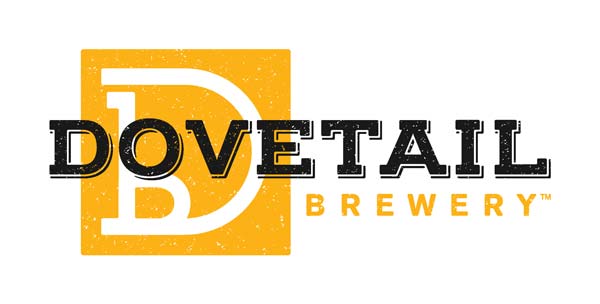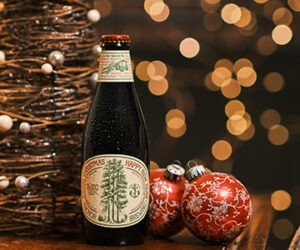Dovetail Brewery
Dear Replicator,
I’m currently reading the book Vienna Lager by Andreas Krennmair — while drinking Vienna-Style Lager by Dovetail Brewery based in Chicago, Illinois. This brewery focuses on lagers. Their helles is excellent, but for me their Vienna is a “buy-on-sight” beer. Unfortunately, it’s not always in sight! I have a new lagering fridge and I’d love for one of the first brews to grace it to be a Dovetail Vienna clone. Thanks!
Chris Carey
Evanston, Illinois
Imagine meeting your future business partner halfway around the world and coming to find out you are from the same town and the two of you have a unified vision for your future brewery. In a nutshell, that’s the story behind Dovetail Brewery of Chicago, Illinois.
Hagen Dost and Bill Wesselink were both studying for their Master Brewing Certifications through the Siebel World Brewing Academy. The program split time between Chicago and Munich, Germany and though both brewery founders hail from Chicago, it was at the Doemens Academy in Germany where they met. Inspired by being in the heartland of the beer world, the two discussed future goals and found common ground about what they enjoyed most about beer.

“As we studied, we also had quite a few beers together in Munich,” said Dost. “We both enjoyed beers made by smaller European breweries. As we went through our brewing education we found the common denominator of our favorite breweries was they used some type of traditional method. Any one of, or a combination of things, such as intensive mashing techniques, open fermentation, use of coolship for lagers or spontaneously fermented beers, long lagering times, and horizontal lagering tanks.”
During one of their philosophical conversations, the concept of the “dovetail joint” surfaced, referring to a term describing a particular woodworking style known for creating a tight, strong bond. Wanting to create a similar bond in the beer world, the two aspiring brewers decided to join forces, believing they could create something stronger together than they might otherwise individually. They decided their new enterprise would be called Dovetail Brewery.
Enter Dovetail
Located in Chicago’s North Center neighborhood near Irving Park and Lincoln (Belle Plaine and Ravenswood Avenues, precisely), one mile north of Wrigley Field, Dovetail Brewery opened on May 23, 2016. The taproom opened about three weeks later. With an ode to long-standing European brewing tradition, interspersed with modern American brewing creativity, Dost and Wesselink created a solid lineup of beers that brought to life what they experienced in the small breweries of Europe.
With IPAs all the rage, Dovetail wanted to stand out from the crowd with a lineup that bucked the trend. On one end of the beer lineup is spontaneously fermented beers such as Kriek, Pomme, and Peche.
“One of the first conversations we had was about coolships and how great having a brewery with one would be. This was November 2011,” said Dost.
On the other end you will find traditional German styles such as Kölsch, Pilsner, Maibock, Hefeweizen, and Helles bring a little bit of old school Germany to the American heartland.
Vienna-Style Lager
One of the standouts in the core lineup is their Vienna-Style Lager. A beer inspired by their own house lager (which contains twenty percent Vienna malt), Dost and Wesselink wondered what a beer made with one hundred percent Vienna malt might taste like.
“We get our Vienna malt from a Bamberg maltster called Bamberger Malsterei,” said Wesselink. “They don’t market; it’s all word of mouth. They’ve been doing that since the 1850s. Their Vienna malt is not like anyone else’s. This malt produces caramelly, nutty notes, and a nice reddish-orange hue.”
The hops are Styrian Golding sourced from Slovenia that produce a spiciness that interplays perfectly with the nutty caramel notes.
Using a medium-thick mash, Dovetail employs a double decoction before the beer gets a coolship rest — in the Czech/Franconian tradition. It is then sent to the cellar through a heat exchanger, where it spends a few days in primary fermentation in an open fermenter. Finally, the beer is moved to secondary fermentation in horizontal lagering tanks where it finishes a few weeks later.
For the first decoction, pull one-third of a thick mash, boil for 20 minutes to maximize Maillard reactions, then return to the main mash. Then, pull another third, a little thinner this time, and boil again for 20 minutes. Once the decoctions are complete, mash out, lauter, and boil.
“Because we have a really nice rolling boil, we boil for one-hour. We feel that we get a good blow off of the dimethyl sulfide (DMS) precursor,” said Dorst.
Homebrewers may want to extend the boil to 90 minutes to ensure proper DMS precursor blow off. Water should be soft, preferably reverse osmosis with minerals added back in. Using a coolship isn’t necessary on a homebrew level, but if you happen to have one, go for it!
“On the first day we brewed it, we had Mozart blaring through the brewery for extra good luck,” said Wesselink. “The resulting beer was exactly what we envisioned, if not better.”
Source your favorite Vienna malt and Styrian Goldings hops and brew your own! Serve it in a lager glass and pair it with wiener schnitzel. Listening to Mozart while brewing is optional.
Dovetail Brewery’s Vienna-Style Lager clone

(5 gallons/19 L, all-grain)
OG = 1.052 FG = 1.012
IBU = 27 SRM = 6 ABV = 5.1%
A traditional Vienna lager using one malt, one hop, and traditional double decoction method.
Ingredients
11.25 lbs. (5.1 kg) Weyermann Barke® Vienna Malt
3.9 AAU Styrian Golding hops (50 min.) (0.75 oz./21 g at 5.25% alpha acids)
3.9 AAU Styrian Golding hops (30 min.) (0.75 oz./21 g at 5.25% alpha acids)
1.5 oz. (43 g) Styrian Golding hops (0 min.)
SafLager S-23, Wyeast 2206 (Bavarian Lager), or White Labs WLP920 (Old Bavarian Lager)
¾ cup corn sugar (if priming)
Step by Step
The brewery uses reverse osmosis (RO) water and adds back calcium chloride and magnesium sulfate to achieve a soft water profile for this beer. At home, for strike and sparge water, do the same or use a mixture of 90 percent distilled water and 10 percent moderately hard, dechlorinated water.
This is a double-decoction mashed beer. Mill grains and mash-in at 127 °F (53 °C). Rest for 5 minutes then pull about one-third of your mash (from the thickest part) and, in a separate pot, bring to a boil. Boil for 20 minutes. Slowly and gently return your decoction to the main part of the mash, until the mash temperature reaches 140–149 °F (60–65 °C). (Don’t exceed 149 °F/65 °C.) Rest for 15 minutes. Pull the second decoction — again, one-third of the mash — and boil for 20 minutes. Slowly and gently return decoction to the main part of the mash, until the mash temperature reaches 158–167 °F (70–75 °C). (Don’t exceed 167 °F/75 °C.) Rest for 45 minutes (this is for good foam). Raise to 172 °F (78 °C) to mash out. Lauter. Boil for 60 minutes, following the hopping schedule.
After the boil, whirlpool for 20 minutes, then crash cool to 41–45 °F (5–7 °C). Pitch the yeast, aerate well, and allow the temperature to free rise to 48 °F (9 °C). Hold at 48 °F (9 °C) until 50 percent attenuation (3 to 4 days), then raise to 54 °F (12 °C) for a diacetyl rest. When the beer reaches its final gravity (typically 5 to 7 days), crash to 30 °F (-1 °C) and lager for 4–5 weeks. Rack and package at 2.6 volumes (5.2 g/L).
Dovetail Brewery’s Vienna-Style Lager clone
(5 gallons/19 L, extract only)
OG = 1.052 FG = 1.012
IBU = 27 SRM = 6 ABV = 5.1%
Ingredients
7.3 lbs. (3.3 kg) Muntons Vienna liquid malt extract (see Step by Step if not available)
3.9 AAU Styrian Golding hops (50 min.) (0.75 oz./21 g at 5.25% alpha acids)
3.9 AAU Styrian Golding hops (30 min.) (0.75 oz./21 g at 5.25% alpha acids)
1.5 oz. (43 g) Styrian Golding hops (0 min.)
SafLager S-23, Wyeast 2206 (Bavarian Lager), or White Labs WLP920 (Old Bavarian Lager)
¾ cup corn sugar (if priming)
Step by Step
If the Vienna liquid malt extract is not available from your supply retailer, you could substitute in 2⁄3 light liquid malt extract and 1⁄3 Munich liquid malt extract. The brewery uses reverse osmosis (RO) water and adds back calcium chloride and magnesium sulfate to achieve a soft water profile for this beer. At home, do the same or use a mixture of 90 percent distilled water and 10 percent moderately hard, dechlorinated water.
Since this recipe is 100% extract and you’re not mashing anything, simply raise 2 gallons (7.57 L) of water to a temperature somewhere around 150 °F (66 °C). A little higher or lower is fine. Remove pot from heat source, and slowly pour in half of your extract, stirring the entire time. Return to flame, raise to boil and boil for 60 minutes, adding hops as indicated. If you want to add a clarifier such as Whirlfloc® or Irish moss or a yeast nutrient, do it with 10 minutes left in the boil. Add the remaining extract with 5 minutes left in the boil, but be sure to take the pot off the heat source and pour extract very slowly while stirring. Return to the heat source and complete the boil. Meanwhile, pre-boil, then chill 3.5 gallons (13.25 L) of water that you’ll later use to top up your wort.
Follow the all-grain recipe for fermentation and packaging instructions.
Tips For Success:
If using a coolship, upon completion of the boil, immediately transfer your wort to the coolship, allowing the wort to cool to 167 °F (75 °C). Then crash to 41–45 °F (5–7 °C) and follow the rest of the directions above. This step replaces the traditional whirlpool stage.
At this temperature (167 °F/75 °C), while not sterile, the wort is still sanitized. The 25 or so minutes it takes from boiling in the kettle to 167 °F (75 °C) in the coolship gives enough time for the hot trub to settle and any more DMS precursor to blow off. This also provides a window for additional hot-side hopping if so desired.


